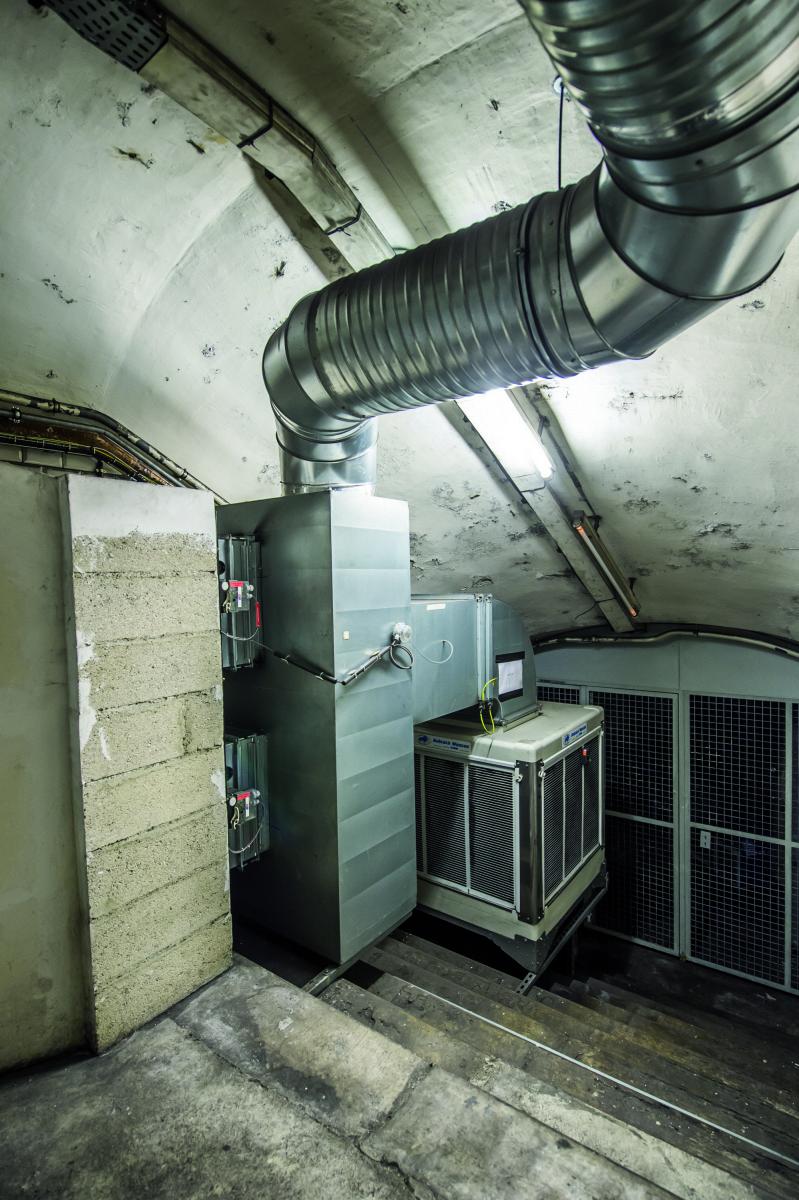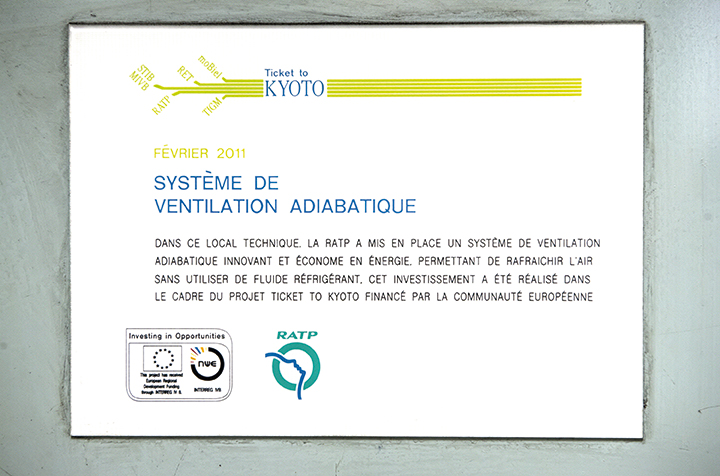 The heat released by automatic vending machines, public address systems and security systems increases significantly the temperature in the technical rooms. Above a specific temperature, the equipment stops working properly. As a result, technical rooms need to be ventilated and cooled.
The heat released by automatic vending machines, public address systems and security systems increases significantly the temperature in the technical rooms. Above a specific temperature, the equipment stops working properly. As a result, technical rooms need to be ventilated and cooled.RATP used an air-cooled chiller but it proved to be inadequate due to expensive maintenance and high energy consumption. Furthermore, it increased the underground temperature and dried the air. RATP tested a new adiabatic cooling system in the Bastille metro station to recover the dry and hot air from the platform in order to cool the technical rooms without releasing heat in the adjacent rooms. The adiabatic cooling system consumes much less electricity, has reduced dust loading in the technical rooms and its maintenance is more economical. The electricity and carbon emissions have been reduced by 90% compared to the classical air conditioning system, enabling a maximal temperature of 25°C in the technical rooms.

| Technical data | |
|---|---|
|
Investment costs (€) |
€84,000 |
|
Energy savings (%) |
90% |
|
Annual energy savings (kWh) |
114,000 kWh |
|
Annual CO2 savings (TCO2) |
9 TCO2 |
Investment sheet: RATP adiabatic cooling
